May means that spring is now in full swing and with a new month comes a whole new list of jobs needing to be completed in your garden. By may the sun has started to shine and the temperatures are well and truly on the rise so there are many jobs that you need to keep in mind to make sure that your garden is in peak condition.
Before starting your May gardening jobs, go back and make sure you have completed all of April’s gardening jobs.
Plant Out Summer Bedding
A colourful flower bed is undoubtedly one of the most stunning features that a garden can have. May is the perfect time to start to bed them. Flowerbeds are terrific as they add an almost instant glow to your garden without too much difficulty.
The best flowers to bed include the beautiful summer staples such as cosmos, sunflowers and nasturtium flowers. While these are the most popular, there are hundreds of beautiful flowers that will help to add an exotic touch to your outdoor areas. Less well-known flowers such as California poppies, lobelia and antirrhinum will also add some elegance to your beds.

Sunflowers 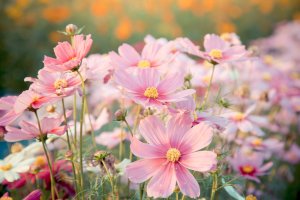
Cosmo Flowers
Tend To Your Lawn
Similarly to the flowerbeds, your lawn is one of the focal points of your garden and because of this one of the most scrutinised elements of your garden.
In May the main things to focus on in regards to your lawn are fertilising, weed control, repairs and seeding.
Fertilising your lawn will help your grass plants to grow as evenly as possible and therefore avoid any bald patches. Weed control on your lawn is particularly important as not only do they look unpleasant but they also compete with your grass plants for the desirable light, water and nutrients.
Repairing and seeding are also things to think about in May if your garden is in need. Simply cut out the damaged areas and relay new turf in the area and then keep on top of aerating the area.
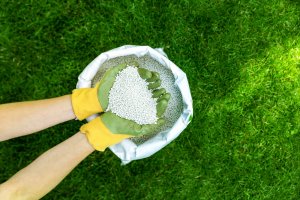
Lawn Fertilizer 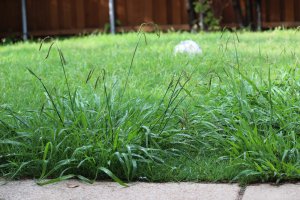
Grass Weeds
Remove Faded Spring Bedding
As the flowers start to fade, they spoil the overall appearance of your beautiful garden space. Flower bedding is intended to be colourful and vibrant to bring your garden to life. Faded plants can take away from the thriving plants in your bedding. So getting rid of them can make a huge difference in your outdoor aesthetic.
Getting rid of these deadheads is not just for visual benefits. It also helps to direct the energy into the thriving plants and also the new plants that are working hard to grow through.
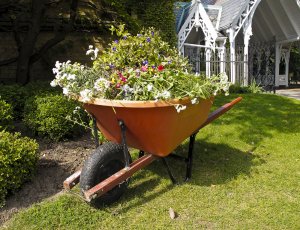
Dead Flower Bedding 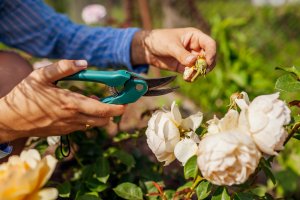
Old Deadheads
Apply Liquid Feed To Spring Bulbs
Having the healthiest plants possible is paramount to any avid gardener. That is why keeping on top of feeding during these spring months is very important.
For around 6 weeks after the bulb has finished flowering you should water and feed the bulb with fertiliser or even a high potassium feed. The potassium helps to promote both feeding and flowering which is why it is very common for feeds to be very rich in this nutrient.
Simply apply the feed to bulbs such as daffodils, tulips and any other spring bulbs to encourage healthy growth and peak bloom next year.

Tulips 
Daffodils
Reduce Snail Population
Snails are not only unsightly and slimy, but they are also a pest to your garden. Snails feed off new, tender plants so you can be sure that anything you plant will be targeted. Some snails also eat plant roots, stems and fruit and therefore can cause considerable and irreparable damage to your garden space.
Getting rid of snails can be done in many different ways. You can naturally repel snails by using specific plants that can act as natural pesticides. Plants that have this unique ability include wormwood, fennel, anise and rosemary. You can also use more chemical solutions, however, we suggest only using these if the natural ways fail.
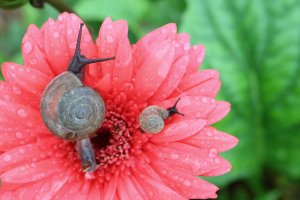
Snails Feeding On Plant
Water Crops Regularly
May means the weather is getting warmer and the weather on the up means that you need to pay more attention to watering your crops. One thing that’s for sure is that a dry crop is certainly not a healthy crop, so staying on top of your watering is paramount.
A good tip to keep in mind is to water crops in the morning as this is the time that the sun is rising and therefore the time when the crops are beginning to use the water. Warmer weather also means that our flowers will be in more regular need of water to keep their brightness and beauty.

Watering Garden Crops
Earth Up Potato Shoots
Potatoes are crops that are commonly planted in the late months for a spring harvest. They are also important to keep on top of with watering and other forms of care. Earthing up potato shoots is another important way of keeping on top of your crop.
Earthing is simply where you cover part of the plant, especially the stem with soil to protect from potential late frosts.
Earthing up potato plants as they grow is very important. It helps to protect early shoots from late frost damage and make sure that the developing potatoes are not exposed to harmful light that can turn the potatoes green and potentially poisonous.
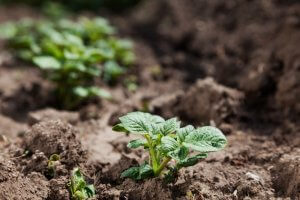
Potato Shoots
Watch Out For Late Frosts And Protect Tender Plants
Although by May most of us hope frosty mornings are behind us, the reality is that in the UK late frosts can always be on the cards.
Frosts can be very harmful to plants, especially newer weaker ones. Frosts can have detrimental effects on plants as they can freeze the water inside the plants causing them to expand and therefore break the cell wall meaning that it is no longer able to carry the sap resulting in the death of the plant.
Keeping a sheet to cover the plant on nights where frost is forecasted could be the difference between your plants thriving or dying.
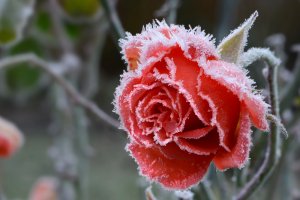
Late Frost On Flower
Check Plants Regularly For Pests
As the weather begins to warm up you will start to come across more and more pests in your garden. Common garden pests include snails, aphids, earwigs, earthworms, whiteflies and more.
There are hundreds of ways to get rid of these annoying garden pests. The most important thing that you should do is constantly check and keep an eye on your plants to see what pests you find.
There are signs that you can look for to detect which plants have fallen victim to pests. Change in leaf colour or texture can be a signal of an insect problem. The leaves might also become spotted, speckled or yellow.
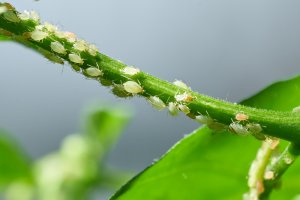
Aphids
Open Greenhouse Vents And Windows On Warmer Days
As the temperature outside begins to warm, the plants in your greenhouse become more and more suffocated. Keeping your plants ventilated and cool is vital as they are unlikely to survive in such temperatures.
Without proper protection from heat, very few plants would survive. Prolonged periods of heat and dry atmosphere can be detrimental to any plants. Keeping your greenhouse well ventilated will help to save and lengthen the lifespan of your crops.
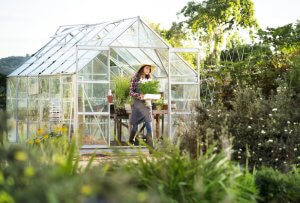
Ventilated Greenhouse









Recent Comments